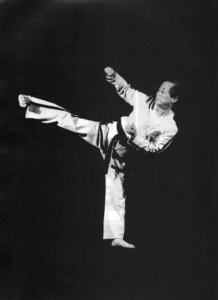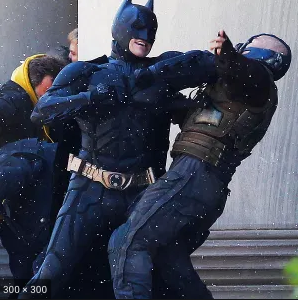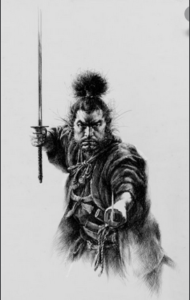This is a term that gets tossed around a lot in the martial arts community: The so called ‘Complete Martial Art’! But what does that exactly mean? Aren’t all martial arts complete systems, or are they ever complete?
Colloquially the term ‘Complete Martial Art’ refers to systems of combat that utilise all of the major disciplines associated with fighting: Striking, kicking, throwing, grappling and weapons. If a Martial Art encompasses all those methods in its curriculum or repertoire, then it is often referred to as a ‘Complete System’ or ‘Complete Martial Art’. Some will say it means more than that; it should include dealing with multiple opponents, conditioning for all the methods mentioned and the full disarming of weapons, not just the use of them.
Conversely if a martial art focuses on one style of fighting, then it is considered ‘Specialised’: Boxing, for example, is a martial art that specializes in a type of striking. Taekwondo, depending on the style, specialises most of the time in kicking. Brazilian Jujutsu, Russian Sambo and Greco Roman Wrestling would be grappling, Judo and Chinese Shuai Jiao mainly focus on takedowns or throwing, fencing and Kendo obviously only focus on one type of weapon. Other martial arts may focus on two or more of the above methods, but not all. Western and Thai Kickboxing, Chinese Sanda and Karate, for example, will often mainly focus on striking and kicking. Aikido will look at locks and throws, Hapkido will do the same but add in kicking and striking to the mix. Mixed Martial Arts will combine to deal with kicking, striking, takedowns and grappling, but this is not considered ‘Complete’ as it does not include dealing with weapons. Going back to the original description of a Complete System, all these martial arts just mentioned will do stringent conditioning for their respective methods, but they will not deal with multiple opponents or the disarming of weapons. Most of the specialised arts will focus on winning fights by points, submission or knockout against an opponent who is approximately the same weight class as them, and the rules dictate they have to fight in a determined way, suitable to their discipline.

Korean Master demonstrating a Taekwondo Kick.
So which martial arts are considered complete? This is definitely up for debate, but generally martial artists would concede that the majority of battlefield based or classical martial arts were complete along with various self-defence systems. Traditional Martial Arts, on the other hand, like Tai chi, Aikido, other styles of internal kung fu, Shaolin, etc… do not really cut the mustard either. Some will use weapons, and many will use most of the fighting methods assigned above, but never all them. Bare in mind that this is not a treatise about which martial art is the best! I have always personally found that a pointless argument as it will always depend on the skill and experience of the practitioner rather than the validity of the art. Some people are just innately good at fighting, and they may have the worst martial art available, but they will still perform better in a conflict than an unskilled practitioner with the best martial art available. We are looking here for the most complete systems of martial art available and looking at why they should be considered ‘Complete’ over others.
The older, battle tested martial arts like Indonesian Silat, Filipino martial arts, Classical Samurai and Ninjutsu arts, and the battlefield arts of China, such as Baji Quan, along with modern or evolved self-defence systems such Israeli Krav Maga, Russian Systema, Jeet Kune Do, Keysi Method or Defence Lab seem to fit the bill. All these systems use all fighting methods against different types of opponents, and different amounts of opponents with or without weaponry. They also all use various methods of conditioning and fitness mostly specific to their systems.
Keysi Method was the martial art used in the choreography of Christopher Nolan Batman Trilogy
Now for many, this is enough. That is all you need to create a ‘Complete System of Martial Art.’ However, I personally think there is more to it than that. For one, the fundamental reason for Martial Arts is self-preservation. That was where martial arts began in Africa over 10,000 years ago: a methodology of movement that would give you a significantly better chance to survive a physical conflict, and due to the migration of human beings from one continent to another, and our innate ability to refine information and knowledge, Martial Arts have continued to develop even to this day (just look at the modern fighting systems like Krav Maga and Jeet Kune Do as examples).
If Self-preservation is the main goal of martial arts, then it would logically make sense to determine what are the most common threats to our survival. On an independent scale, you are far more likely to die from heart disease, cancer or dementia, than from a knife attack. From this point of view the best form of self-preservation is optimised health.
The problem here is that people often equate health with high levels of fitness. Unfortunately, this is not true. If it was, high level athletes would live substantially longer than normal amateur athletes, but the data shows they do not. Continual high intensity fitness often breaks the body down over time rather than build it up. Health is more about balancing your life, which is a Taoist and Shintoist principle from China and Japan respectively. This is one of the reasons that certain Asian martial arts are so heavily linked to the principles and moralities of certain philosophies and religious practices from their countries that teach a balance in your life between the excessive and the deficient. Think Yin and Yang. If you think fitness is fundamental to the effectiveness of a martial art system, then this also poses a threat to the longevity of your practice. In Krav Maga for example, you need maximum speed, aggression, power and strength to be truly effective in your practice. What happens when you reach your 60s or 70s? Will you be able to perform as you did in your 20s and 30s? Most likely not! Would you then consider a system like this a complete system?
This also works on a global scale as well. The biggest threat to humanity would now appear to be disease and climate change, not world war. This again requires consideration for your own health as well as that of the planet, of nature, of your community. Whilst I am not saying that in order to follow a Martial Art you should change your religious beliefs or lack of belief, I am highlighting that the positive principles from some religious ideals can be mapped onto your own life without compromising your own faith. This can have a wider positive effect on your surroundings, loved ones and this rock formed spaceship we call Earth. Having the mental fortitude to make the morally correct decisions is something that should be taught and nurtured in a Martial Art.
The battle is therefore not so likely to be waged with fists, swords or firearms; the real battle is within ourselves; in terms of physical health, mental purpose and psychological wellness. I would therefore say that ‘Complete Martial Arts’ are systems of self-preservation that build the body up, rather than break it down, allowing the practitioner to train for the duration of his/her lifetime; create a healthy mindset through mental practice such as meditation and mindfulness; and allow you to self-evaluate your psychological state when under stress, as well as all the other aspects that make a complete system of martial arts that I have highlighted thus far.
In my experience (which by the way makes this purely subjective; I am well aware that there may be other systems I have not come across, or my experience with certain systems has led me to misjudge them), there are only 3 of the above mentioned systems that could therefore be called a ‘Complete Martial Art’:
1. Russian Systema – this martial art has a thousand year history, has continued to evolve to the present day, deals with all forms of combat and weaponry, focuses more than any other martial art on the psychological health of the individual, uses Russian Banya (hot Sauna and plunge pool), breathing methods and massage to improve the health, rather than just the fitness of the practitioner, and based on Russian Orthodox Christian principles practices self-preservation in a way that is beneficial for the world around it.
2. Ninjutsu – my main experience is with the Bujinkan Budo Taijutsu system, which is based on 9 schools of both the Ninja and Samurai, also dating to over 1000 years old in some cases. There other schools that practice in a similar way, not just ninjutsu schools, but likewise there are ninjutsu schools that do not practice in the same way either. As with Russian Systema they deal with all forms of Combat and weaponry, probably more than any other system. Ninjutsu teaches repeatedly the art of awareness, survival, the importance of a good heart, to the point that the grandmaster of the Bujinkan, Masaaki Hatsumi, was awarded a commendation from the Pope for his contribution to humanity. To many that would seem ironic as he teaches the art of the assassin, and he follows the path of Japanese Zen Buddhism and Shintoism. Yet it is the teachings of the correct responsibilities of his students within the community, their training in health, rather than general fitness and the ninja principles of overcoming the ego to avoid conflict wherever possible that make it a complete system.
3. Baji Zhandao Kung Fu – Not surprisingly, considering this is a blog on this style’s website, I would consider the Baji Zhandao System a complete system. It deals with all the aforementioned fighting methodologies, based on 12 different schools of Kungfu, some as old as 2,500 years old, many of which were proven on the Chinese battlefields. It also encompasses methods of health practice for the mind and body, particularly through the principles of Chinese Medicine as found in many variations of Qi Gong, which in turn help the psychological development of the student. Understanding how to take care of the body and mind against disease and injury, learning to control the ego and develop a healthy identity to secure good relationships and avoid conflict, and strengthen psychological fortitude in order to deal effectively with trauma, are all teachings of a complete system that Baji Zhandao does rather well at!
All three of these systems are designed to be effective in practice up until the day you leave this world. The same cannot be said for many other Martial Arts out there.
One further thing that one might say about a Complete Martial Arts System is that it is never complete! It should always be evolving. This actually opens the door to some of the other systems mentioned earlier, such as Krav Maga, Keysi, Jeet Kune Do, Defence Lab, etc…, but I still think they are missing the fundamental subtly on health over fitness, mental wellness and psychological strengthening. In reality though, all martial arts are evolving, even the stiff, traditional martial arts that seemingly never change how they train, do evolve at some point down the line, they never would have got where they are today if they had not. There will be many who practice other arts who will obviously disagree with my evaluation. Some will say I am thinking too much about it, it’s as simple as the original description; if you do all the original fighting methods then it is classed as a complete system. Others will point out that their system deals with psychological trauma just as well as Systema, or that they use Chinese Medicine and Qi Gong in their system too, but more often than not, they still do not meet the entire criteria to be called a complete system in my book, and I do strongly feel that the criteria I have mapped out are fair and realistic in what many should refer to as a ‘Complete Martial Art’. The world is changing, therefore your outlook on what is relevant and what will benefit you the most should change too. One of the key principles that the 3 systems I highlighted above have in common is their ability to adapt to changing situations. Adaptability is a key to survival. Do not get caught stuck in your ways. As the famous swordsman Miyamoto Musashi once wrote: ‘Fixation is the way to death, Fluidity is the way to life.’
Artist’s rendering of Miyamoto Musashi, a master Ronin from the 16th Century.


